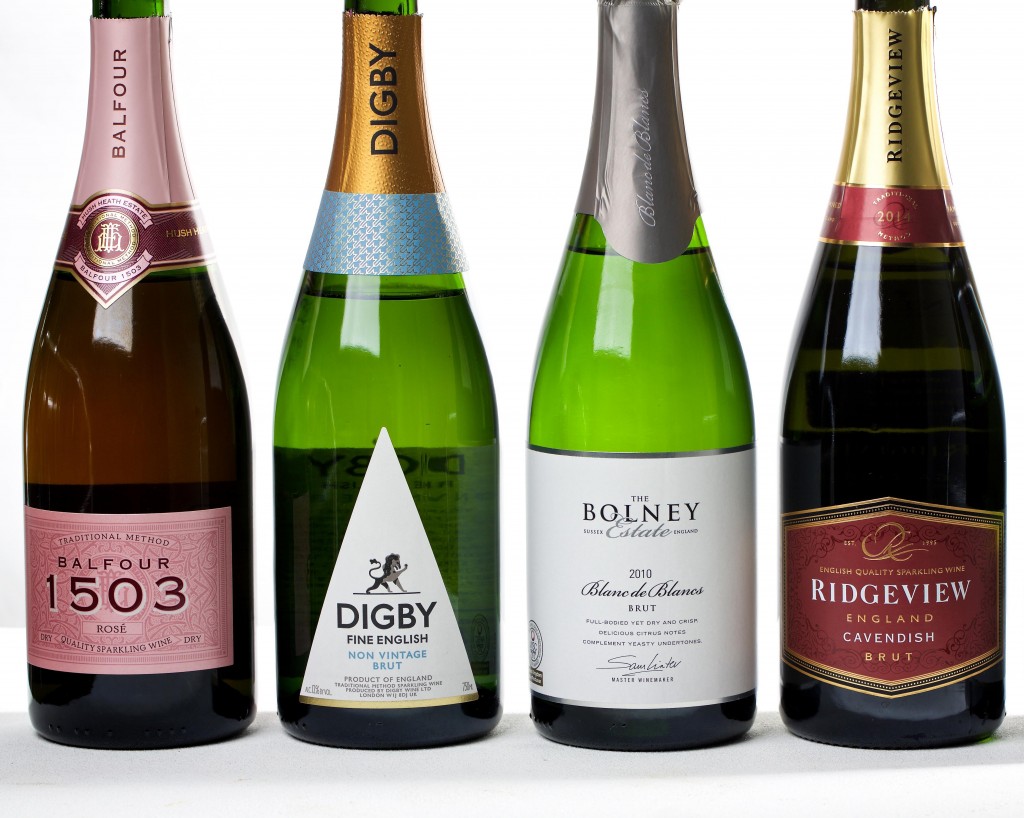
We can now add Gusbourne, Balfour, the Bolney and Digby Fine English to the list. Like the Ridgeviews that debuted a year ago, these new arrivals offer tremendous quality and value.
England’s prime wine areas are in the south, through the counties of Sussex, Hampshire and Kent. This is the warmest part of England, though still cool for wine production. The climate helps ripen the grapes just enough while preserving the acidity so vital to sparkling wine. The region also shares a geological heritage with Champagne, in northern France, as both regions lie astride the same ancient chalk sea bed.
Although British vintners managed to add bubbles to wine as early as the 1700s, the modern era of English sparkling wine dates to the mid-1960s. Five decades of grape growing and experimentation have led to improved quality and increased quantity. Global warming hasn’t hurt, either, as Richmond-based importer Bartholomew Broadbent, a British native, points out.
“Back in the 1960s, my father” – that would be noted British wine expert Michael Broadbent – “was winemaker for an English winery,” Broadbent says. “I remember clearly cutting grapes with secateurs when I was 6 years old. It was a cold, muddy job, and back then the English climate was probably the main reason the wines weren’t great. Today, one of the few benefits of climate change is that southern England has been blessed with an ideal climate for making top-quality sparkling wine.”
What Broadbent calls an “absolute frenzy” of American interest in these wines has been fueled by television shows such as “Downton Abbey” and “The Crown,” he adds. The shows “help maintain a healthy interest in the highest reaches of English society, and English sparkling wine is the pinnacle.”
This fall, Broadbent Selections added sparkling wines from Gusbourne Estate winery to its portfolio. These include a riveting 2011 Blanc de Blancs (made entirely of chardonnay) and a deep, savory Brut Reserve. Gusbourne is a young winery, with vines first planted in 2004 and its first releases in 2010. So there’s no track record of centuries, as there is in Champagne, but these early wines are world class.
“This is the month of giving, and, if you want to give something which nobody has tasted but represents the very finest in wine, then Gusbourne is the perfect answer,” Broadbent says.
Gusbourne is not the only answer, however, and Broadbent is not the only one prone to letting his marketing enthusiasm flow as freely as wine. “We want to be an internationally loved luxury brand,” says Trevor Clough, a co-founder of Digby Fine English, which owns no vineyards but follows the classic champagne negociant model, buying grapes from a variety of growers. The brand, founded in 2009, is named for Sir Kenelm Digby, who invented the modern wine bottle (strong enough to contain the pressure of sparkling wine) in the 17th century.
I met Clough in October at a reception in New York at the British consul’s residence. He boasted that Digby was the most expensive English sparkling wine, an interesting marketing tack to be sure. “We blend to achieve a beautiful Digby nose, a round Digby body and an elegant, lasting finish,” he enthused.
The New York event introduced the British Bottle Co., an exporter of U.K.-made beer, wine and spirits founded by Red Johnson, son of Hugh Johnson, the eminent wine writer.
England produced only 5 million bottles of wine (total, not just sparkling) last year, but that was double the production of just five years earlier, said Ross Allen, the deputy U.K. consul. “It’s also gotten a lot cheaper over the past few months,” he added ruefully, referring to the decline in the British pound after Britain’s voters decided to leave the European Union.
Richard Balfour-Lynn has no desire to grow his Hush Heath Estate winery into a large operation. “We want to remain a boutique winery,” he said as he poured me a taste of his Balfour 1503 Rosé, a lovely pink fizz that remains crisp despite an unusually high 18 grams of residual sugar. “It’s the British acidity that keeps it balanced,” Balfour-Lynn beamed.
Yet he was more modest than his counterparts in describing his drive to produce high-quality wine in an unknown region. “We’re in a business where if you fail to sell your product, you have to drink it yourself,” he said. “So it’d better be something we like.”
Red Johnson was not so shy in describing his plans to sell his five brands of English fizz in markets as diverse as Hong Kong, Singapore, Japan, Canada and Europe in addition to the United States. “Wherever there’s a sophisticated wine culture, we want to be,” he told me.
And why enter a market bringing so many brands of an unknown product? “If you export one wine to a market, it’s a novelty,” he said. “If you export a portfolio, it becomes a category.”
Author: Dave McIntyre writes about wine weekly. He also blogs at dmwineline.com. @dmwine
⊂(◉‿◉)つ
Si deseas ver el contenido completo o mas dale click en el enlace de abajo.
Post y Contenido Original de : Infobae
http://www.infobae.com/america/wapo/2016/12/12/an-upside-to-climate-change-the-sparkling-wines-of-southern-england/
⊂(◉‿◉)つ

